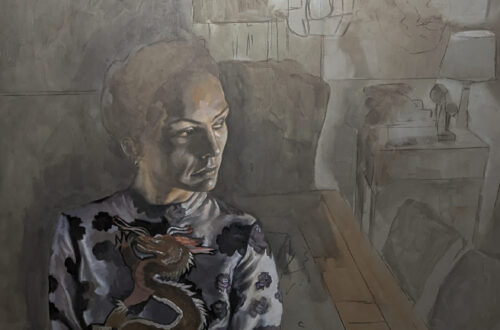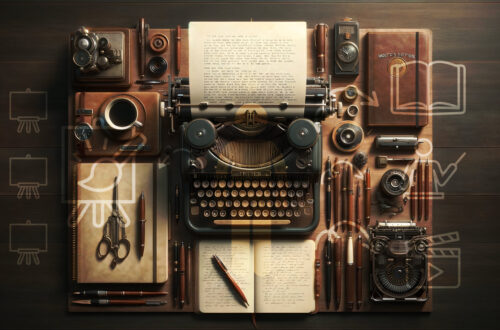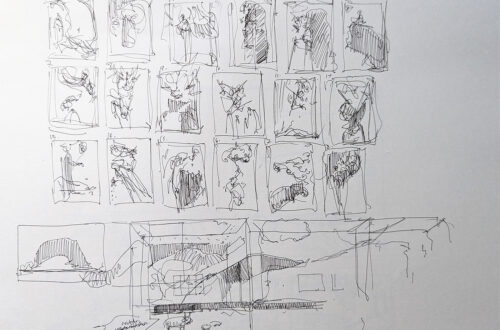
10 Personal Sketchbook Themes to Inspire New Artwork in 2023
The sketchbook is a versatile tool. I’ve seen individuals utilise it in countless ways. It’s crucial to recognise that there is no one “right” way to use a sketchbook. If you have honed your creative process, you may already have integrated sketchbook usage into it. If not, then this post aims to assist you in incorporating more productive sketchbook usage into your routine this year. Let’s make the sketchbook work for us and utilise it to cultivate fresh and improved concepts for our artwork.
Your personal sketchbook is a tool for idea exploration
When students first enter art education, they often use sketchbooks as a collection of disconnected drawings. There is a tendency to believe that a sketchbook must be a book of polished sketches, a small portfolio of drawings that can be presented to demonstrate one’s skill. Let’s begin by freeing you from that constraint. Sketchbooks are not meant to showcase your abilities. Your sketchbook is a tool for you to work through ideas. A sketchbook can be anything you desire it to be. It does not have to be a compilation of drawings that demonstrate your capabilities… that’s what your finished work is for. Consider your sketchbook as a rough draft, similar to the scratch paper you used to solve math problems.
One of the most powerful and useful ways to utilise your sketchbook is to treat it as a tool to explore a theme. A sketchbook that is used in this way becomes a much more potent tool in the development of ideas for artwork compared to a sketchbook that just contains a collection of random drawings. You’ll get a lot more creative mileage from being focused on a theme.
When you use your sketchbook in this way it becomes more than a book of drawings. It becomes a visual journal of your thought process.
Theres no such thing as the perfect theme
Don’t get caught in the trap of overanalysing and trying to find the “perfect” theme for your sketchbook. This can lead to stagnation and hinder progress. Remember, this is just one of many sketchbooks you will create. Choose a personal sketchbook theme that resonates with you and get started. It’s okay to have multiple sketchbooks for different themes, so don’t worry about losing any ideas. Just get to work and enjoy the process.
List of personal sketchbook themes
I’ve listed some themes here that may be good potential starting points for your exploration. If any of these are helpful and you use one or more, please send me some pictures of your work. If you’d like to discuss the use of a theme further then get in touch.
Taking an off-the-shelf theme for your personal sketchbook exploration might seem counterintuitive. But the truth is, it doesn’t really matter. Give the same theme to 100 artists and you’ll get 100 different explorations and conclusions. It can actually be beneficial to select themes from external sources when developing your practice. These themes can provide support as you figure out your own themes and identity as an artist.
1. Same place different times
Pick a location that means something to you and explore how that place changes on different days and time of day. This could include lighting, temperature, weather, colour, inhabitants, noise level, etc. Make scientific measurements of these things and explore the use of that data to make art.
2. Packs of cards and their uses, meanings and symbolism.
This could include playing cards, tarot cards, game cards. Look at the history of cards and their use. Explore personal symbolism for a deck of cards that you might create. Subvert the idea of a deck of cards altogether.
3. Liminal or enclosed spaces
Look for examples of liminal spaces in your environment or in your life. Explore the idea of physical transition or hidden, enclosed spaces that we cannot see, the spaces between walls, etc. Look at the work of UK artist Rachel Whiteread.
4. Symbolism of the animal
Select flora or fauna that you relate to and explore the symbolism and cultural meanings associated with it. Create a subset of living things that represent elements of you or others and explore the idea of mapping this symbolism to human attributes.
5. Life containers
Think about living beings as containers for life. Explore the physiology of mammalian life bearing and the symbolism of living beings as vessels for life itself.
6. Harmful re-framed
Investigate where visual interest can be found in something sinister that is designed for a darker purpose. Look at the history of weaponry and torture implements for example. Explore the contradictions in re-framing of these objects.
7. The detritus of murder
Why are people obsessed with murder and serial killers? What does murder mean and what is the significance (if any) of peoples obsession the artefacts of murder; murder weapons, death masks, etc. Explore the themes in our obsession with this aspect of human nature. Read ‘Why We Love Serial Killers’ by Scott Bonn (this is not an affiliate link) and this article on Psychology Today.
8. Environmental tension
Humans encroach on the natural environment everywhere we go. There are very few places on the earth that have no trace of human life somehow. Look for environmental tension where you live and explore the causes and implications of this tension.
9. The hidden world below
Think about what lies beneath your feet every day under the ground and look for examples of underground ‘worlds’. Read Underland by Robert Macfarlane (this is not an affiliate link) for inspiration. Consider the layers that are below you both natural and man-made.
10. Personal mapping
Make personal symbolic maps from your immediate landscape whether it be urban or rural. Think about mapping in the widest sense, include physical, geographic, emotional and historical layers. Explore what maps mean and how they can be adapted to other uses.
How to use a sketchbook for personal theme exploration
Once you’ve decided on a theme for your personal sketchbook, it’s time to dive into research mode. Immersing yourself in your chosen theme is crucial for generating ideas and inspiration. Remember that research can take many forms – your sketchbook may become a combination of journal entries, scrapbook material, and doodles as you explore and compile your findings.
Don’t be surprised if you find yourself far into your sketchbook before you even begin drawing – sometimes the written and visual research alone is enough to create a meaningful and thorough exploration of a theme. In fact, I’ve seen some impressive sketchbooks from students that are mostly handwritten notes and scrapbook material, with only rough doodles to illustrate the visual development. Don’t be afraid to stray from traditional “finished” drawings in your personal sketchbook.
How to develop your own personal sketchbook themes
It’s crucial to have some direction and over-arching connection to the work in a productive sketchbook. A theme that is too broad can lead to aimless exploration, while one that is too specific can limit your creativity. Striking a balance between these two extremes is key to making the most of your sketchbook. To do this, it’s important to be self-aware and choose a theme that resonates with you, but also provides enough structure to guide your exploration.
Remember, your sketchbook is a place for experimentation and growth, so don’t be afraid to try new things and make mistakes. With practice, you’ll find the perfect balance for your creative process.





